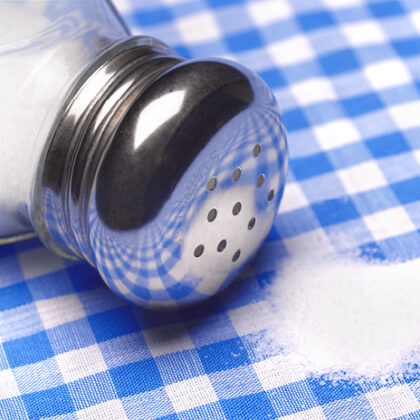First-morning urine: a simpler way to track your salt and potassium?
The paper “Estimating sodium and potassium intakes in a Portuguese adult population: can first-morning void urine replace 24-hour urine samples?“, published in Journal of Nutritional Science, has been chosen as the latest Editorial Highlight and is freely available to download for one month.
We all know that too much salt (sodium) and too little potassium can be bad for our health, especially increasing the risk of cardiovascular diseases. The World Health Organization (WHO) even recommends specific daily intake levels to help reduce global health burdens. But the question is: how do we accurately measure what people are consuming? The “gold standard” for tracking sodium and potassium intake is a 24-hour urine collection. This method is considered highly reliable because it captures most of what we consume and excrete. However, can you imagine how difficult it is? Collecting all urine for a full day takes a lot of effort, making it difficult for large population studies. Imagine trying to get thousands of people to collect their urine for a full day! This challenge often leads to low participation rates and can skew results.
Is there an easier way?
This is where First-Morning Void (FMV) urine samples come in. These are single urine samples collected first thing in the morning. Researchers are exploring if these quick, easy-to-collect samples can provide a reliable estimate of daily sodium and potassium intake, overcoming the challenges of 24-hour urine collections. Our study investigated this question in a Portuguese adult population. They compared how well different predictive equations, using FMV urine, could estimate sodium and potassium excretion compared to the conventional 24-hour urine samples. They also looked at how these estimates correlated with dietary intake reported through 24-hour food recalls.
What did we find?
Our results showed that while FMV urine samples, used with predictive equations, could moderately to strongly correlate with 24-hour urine measurements, they often tended to over or underestimate excretion levels
• For sodium estimation, the Toft equation proved to be the most reliable. It showed a
moderate correlation with 24-hour measurements and, crucially, no significant risk of
over or underestimation.
• For potassium, the Tanaka and Kawasaki equations also showed moderate correlations,
but they tended to underestimate 24-hour potassium excretion.
An important finding was that calibrating these predictive equations generally improved their
accuracy. When comparing these calibrated FMV estimates with dietary recalls, the study found
a moderate correlation for sodium. For potassium, the correlation was weak to moderate, but the agreement between dietary recall and calibrated FMV urine was very close.
Why does this matter?
This study highlights that while 24-hour urine collection remains the “gold standard”, calibrated FMV urine samples offer a moderately accurate alternative and resource-efficient option for large-scale nutritional studies. This is a significant step towards more practical and consistent methods for monitoring population-level sodium and potassium intake. This information is vital for policymakers to create effective strategies to improve our health and reduce the burden of diet-related disease.
What’s next?
We still need more research to improve predictive equations, optimize the timing of spot urine collection, and reduce systematic biases. But for now, the question remains: could spot urine samples become a game-changer for dietary assessment in the future?
AUTHORS / AFFILIATIONS:
Ana Carolina Lages Goios1 2, Milton Severo2 3, Carla Maria Moura Lopes2 4 5, Duarte Paulo Martins Torres1 2 4
Affiliations
1 Faculty of Nutrition and Food Sciences, University of Porto, Rua do Campo Alegre, 823, 4150-
180 Porto, Portugal.
2 Epidemiology Research Unit, Institute of Public Health, University of Porto, Rua das Taipas 135,
4050-091 Porto, Portugal.
3 Instituto de Ciências Biomédicas Abel Salazar, Universidade do Porto, Rua Jorge de Viterbo
Ferreira 228, 4050-313 Porto, Portugal.
4 Laboratório para a Investigação Integrativa e Translacional em Saúde Populacional (ITR),
Universidade do Porto, Rua das Taipas, n◦ 135, 4050-600 Porto, Portugal.
5 Department of Public Health and Forensic Sciences, and Medical Education, Faculty of
Medicine, University of Porto, Alameda Prof. Hernâni Monteiro, 4200-319 Porto, Portugal
Each month a paper is selected by one of the Editors of the six Nutrition Society Publications (British Journal of Nutrition, Public Health Nutrition, Nutrition Research Reviews, Proceedings of the Nutrition Society, Journal of Nutritional Science and Gut Microbiome). Take a look at the entire Nutrition Society Paper of the Month Collection.






